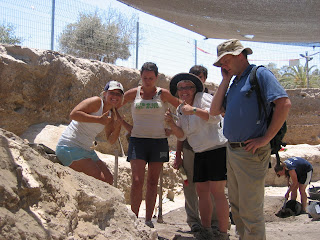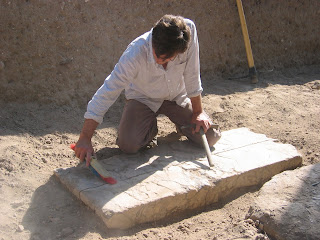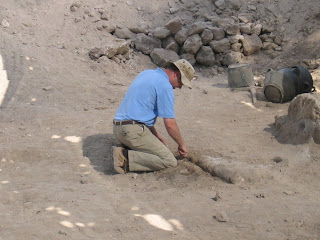
Quick, can I write an entry before pottery washing and still have time to get some Ice Coffee? Let's see.
Today, in our latest edition of "Getting to Know You" I'd like to introduce you to Dr. Daniel Master, Co-Director Ashkelon Excavations and Associate Professor of Achaeology at Wheaton College. Here goes.
Dr. Master doesn't remember what he wanted to be when he was little but he does remember that he was notorious for telling his cousins where to dig. Today, Dr. Master is still telling everyone where to dig. In fact, that is an important part of his job as co-director. Dr. Master's job is to plan the season's work, find people who want to do the same work and then make it happen and do whatever he can to make sure all the work gets done. His favorite part of the job is working with people he likes. And he has no least favorite part of the job because, he told me, if there was something he didn't like he would change it.
Favorite tool: Trowel
Most interesting find he has excavated: 604 BC destruction of Ascalon
Favorite treat while in Israel: Ben and Jerry's Cherry Garcia Ice Cream Bar covered in Dark Chocolate
BTW, the answer to the question is "no." I wasn't able to post this before pottery washing. At 8:19 it is now just 11 minutes until my bedtime. Until next time, the dirt is ready!
























